Video: What did the Baalbek temple complex look like?
The temple complex at Baalbek is a ruin. It is difficult to visualize, from a few small images.
Wikipedia does an excellent job of presenting images of the complex:
“Baalbeck, with its colossal structures, is one of the finest examples of Imperial Roman architecture at its apogee”, UNESCO reported in making Baalbeck a World Heritage Site in 1984.[21] When the committee inscribed the site, it expressed the wish that the protected area include the entire town within the Arab walls, as well as the southwestern extramural quarter between Bastan-al-Khan, the Roman site and the Mameluk mosque of Ras-al-Ain. Lebanon’s representative gave assurances that the committee’s wish would be honored.
Source: Wikipedia on Baalbek.
Chris White’s video on Baalbeck includes clear images of Baalbek’s layout.
See the transcript of this video here: Chris White’s 18-minute video, on the Trilithons of Baalbek.
The overview is seen in the following drawings and images:
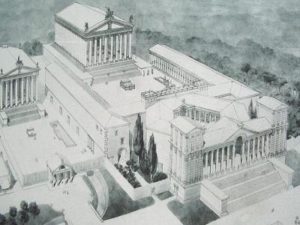
Drawing: Visualization of Baalbek Temple Complex, source: Wikimedia Commons
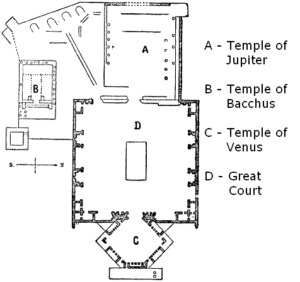
Above Drawing: Layout Diagram, Baalbek Temple Complex, source: Wikimedia Commons
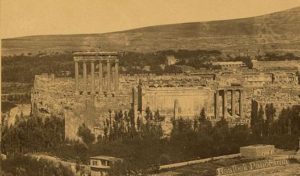
Above Photo from 1890 of Baalbek temple complex, source: Wikimedia Commons
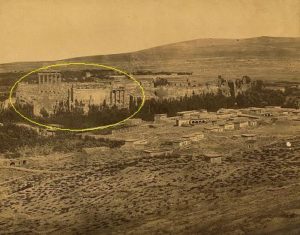
Above Photo from 1890 of Baalbek temple complex with surrounding landscape, source: Wikimedia Commons
Source for article information: Wikipedia, “Baalbek”.
The three temples
It is easy to spot the Temple of Jupiter, of which 6 columns are still standing. According to Wikipedia, “Baalbek,” this was the largest religious structure in the entire Roman empire.
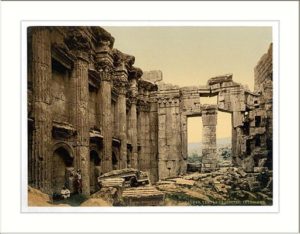
Attribution for above 1890-1900 photo, Temple of Jupiter: By Snapshots Of The Past [CC BY-SA 2.0 (http://creativecommons.org/licenses/by-sa/2.0)], via Wikimedia Commons, picture from 1890-1900
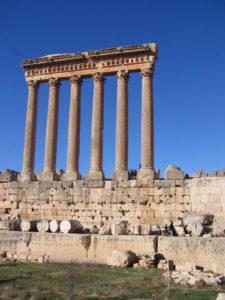
Attribution for above 2010 photo, 6 columns of Temple of Jupiter: Wikimedia Commons, 2010 photo
The temple of Bacchus, pictured below, is considered one of the best preserved Roman temples in the world. Source: Wikipedia, “Temple of Bacchs”. It is larger than the Greek Parthenon, and is basically considered a slightly smaller version of the larger Temple of Jupiter.
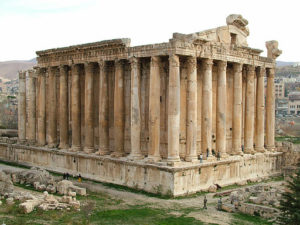
Attribution for above Temple of Bacchus: By Gaël Frouin (Bacchus temple at Freemages) [FAL], via Wikimedia Commons
The Temple of Venus, the pentagonal or circular third temple in the complex, was situated near what was an earlier and simpler companion structure, the Temple of the Muses. The photo of a remnant of the Temple of Venus, below, is from the late 19th century.
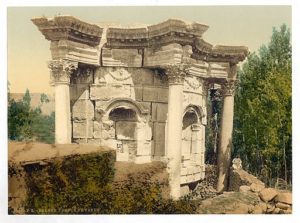
Attribution of above Temple of Venus photo: Wikimedia Commons
Next Page: Why did the Romans build their largest temple so far from home?



